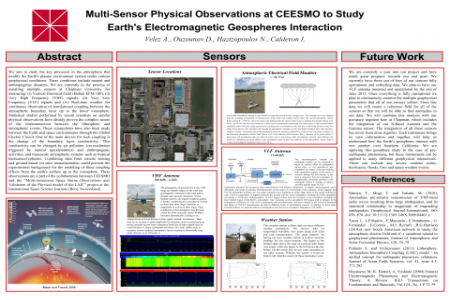We aim to study the key processes in the atmosphere that modify the Earth's plasma environment system under various geophysical conditions. These conditions include natural and anthropogenic disasters. We are currently in the process of installing multiple sensors at Chapman University for measuring: (i) Vertical Electrical Field (Boltek EFM-100), (ii) Very High Frequency (VHF) signals, (ii) Very Low Frequency (VLF) signals and (iv) Real-time weather for continuous observation of translational coupling between the atmospheric boundary layer up to the lower ionosphere. Statistical studies performed by recent scientists on similar physical observations have already proven the complex nature of the interconnection between the lithosphere and atmospheric events. These connections have also been made between the Earth and space environments through the Global Electric Circuit. One of the main drivers for such coupling is the change of the boundary layer conductivity. This conductivity can be changed by air pollution, ion nucleation triggered by natural (geodynamics) and anthropogenic activities, and mesoscale atmospheric systems such as tropical hurricanes/typhoons. Combining data from remote sensing and ground-based (in situ) instrumentation could provide the experimental background for the modeling of these coupling effects from the earth's surface up to the ionosphere. These observations are a part of the collaboration between CEESMO and the “Multi-instrument Space Borne Observations and Validation of the Physical model of the LAIC” project at the, International Space Science Institute (Bern, Switzerland).


